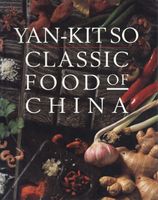Label
All
0
Clear all filters
Cold Starters
Appears in
By Yan-Kit So
Published 1992
In Peking or northern cuisine and in Shanghai or eastern cuisine, it is traditional to serve cold dishes prior to serving something hot. While no one knows the exact origin of this custom, most agree that it can be traced back to the Spring and Autumn era (770–476 BC), when feudal lords were carving up the disintegrating Zhou dynasty and fighting among themselves for supremacy. The Duke Wen of Jin had, among his numerous advisers, Jie Zhitui, who accompanied and supported him as his comrade-in-arms for nineteen years. When, at last, the duke consolidated his power and set up his feudal state in Shanxi province, he rewarded many of his advisers but he neglected Jie. Without a word, Jie left the court and retired to live on a mountain. Jie’s followers, feeling aggrieved on his behalf, posted a petition at the palace setting out what they considered to be the injustice done to their master. When the duke read the petition he felt so ashamed that he immediately sent an envoy to invite Jie back to court. But Jie declined the offer. To demonstrate his sincerity, the duke himself went to the mountain only to find that Jie had hidden out of sight. The duke thought that if he set fire to the mountain, Jie was bound to come out of hiding, and he could then convince his erstwhile supporter to rejoin him at court. And so he ordered his men to set fire to the trees. But instead of escaping, Jie stubbornly held on to a tree and was thus burned to death. Full of remorse, the duke grieved with his people for the tragic loss of Jie. As a memorial to him, the duke forbade the lighting of fires on the anniversary of his death, and instead enjoined his people to eat cold food with him. It fell on the day before the Clear and Bright Festival (which occurs around Easter and is the time when Chinese go to sweep the graves as a sign of respect to the deceased), and became known as ‘hanshi jie’ or the cold food festival.
Become a Premium Member to access this page
Unlimited, ad-free access to hundreds of the world’s best cookbooks
Over 160,000 recipes with thousands more added every month
Recommended by leading chefs and food writers
Powerful search filters to match your tastes
Create collections and add reviews or private notes to any recipe
Swipe to browse each cookbook from cover-to-cover
Manage your subscription via the My Membership page
Best value
In this section
Advertisement
Advertisement
The licensor does not allow printing of this title


